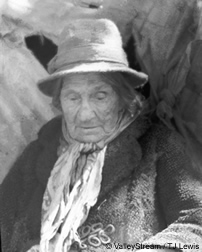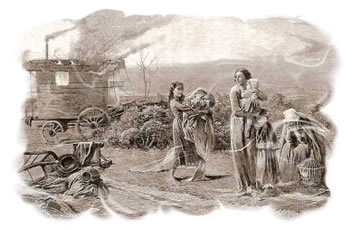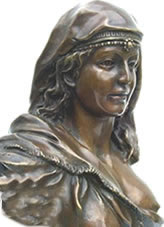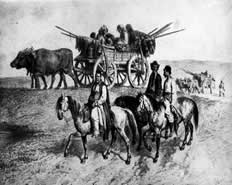
Wanderings around Wales
The wanderings of Gypsies around Wales can be traced through court records and Welsh literature. The first reference is from 1579 when the Sheriff of Radnor had the problem of feeding 40 'Egyptians' in prison; their crimes were only of vagrancy. At the same time Gypsies were depicted in bawdy verses: one poet wrote of a burly Gypsy in an alehouse at St Asaph, another mentioned a Lord of the Gypsies and his band who roved into Wrexham.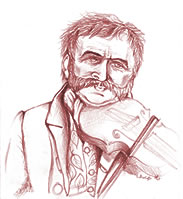
Abram Wood and his family arrived from England about 1730 and were probably the first tribe to be based solely in Wales. Its members eventually entrenched themselves in the north. The Lees and Lovells followed them, whilst the Locks and others stayed further south.
In 1737 two men were executed for robbing a Gypsy named
Henry Lovell. Although these men were not born Gypsies they
travelled with them, and one of the condemned left behind a
description
of his life on the road. He spoke of a gang of thirty 'strollers',
including
Bozells and Lovells, who staked out sheep during the day and then returned with dogs at night to steal them.
Once killed, skinned and taken a safe distance away, the sheep were roasted over a woodfire. Other gang members would steal horses, whilst John Bozell read fortunes or enticed money from his victims by promising sudden wealth. One handsome fellow called George Kemp sold embroidered waistcoats and was often accompanied by four fancy women, but he also stole gold rings from a house in Glamorganshire and committed highway robbery.
In 1787 the first Gypsy character appeared on the Welsh stage in Twm o'r Nant's play Pleser a Gofid: 'Aunt Sal' was a palmist from Glamorganshire and declared herself proud cousin to the well-known Abram Wood. She travelled the country and earned a living by reading fortunes, delving into the standard Gypsy reference books Hocus Pocus and The Book of Knowledge.
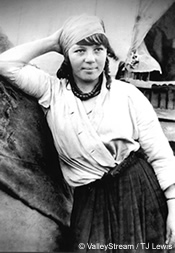
By that time, Gypsies were everywhere and had a reputation for tricking people out of their money. In the 1820s a writer to the Welsh magazine Seren Gomer reported thousands of them throughout Wales. He wrote that they were poorly clad and living in squalid conditions in tents. They seemed without religion or morals, and their only income came from thieving, cheating and fortune-telling.
Clearly, he had not done his research properly. Most Gypsies lived by strict moral codes, and many of them were followers of the Christian faith. Historical records written by gaje non-Romany authors were unfairly biased and included many negative facts, conjuring up a terrible portrayal of the Romany people. Today's really no different - the media rarely balances out good news from bad - so on that basis we can say there's always been the lighter, more real side!
Most Romanies minded their own business, and many Welsh farmers and country folk had favourable relationships with them. The farmers looked forward to their return each season to work the land and let them sleep in their barns. The villagers knew there would be merry singing and dancing to the harp and fiddle in local inns at eventide. Gypsies began to compete in local eisteddfods and began winning prize-chairs at the national events. And from there, they went on to play for Queen Victoria and her son Edward VII at Buckingham Palace.
Strict Copyright Warning
All texts/audio/still/motion picture images are strictly copyright to ValleyStream Media 1980-2010 or to the stated contributor/
copyright holder/s or "unKn". Any unauthorised copying of any images or material from this website for any use is strictly prohibited without written permission from the image owners - owners of unknown images ("unKn") from this website please contact us for fair use or image withdrawal. All rights reserved.
